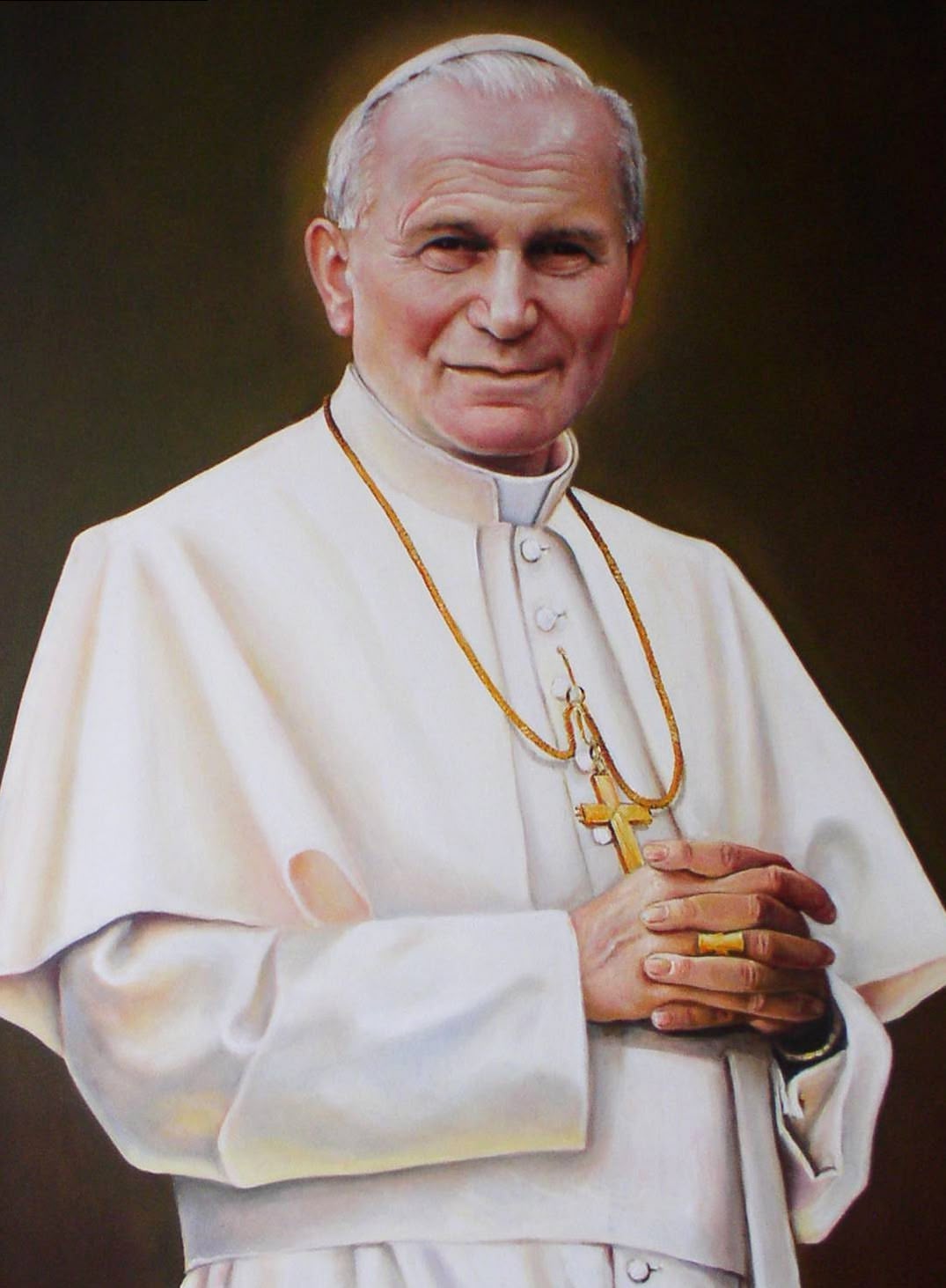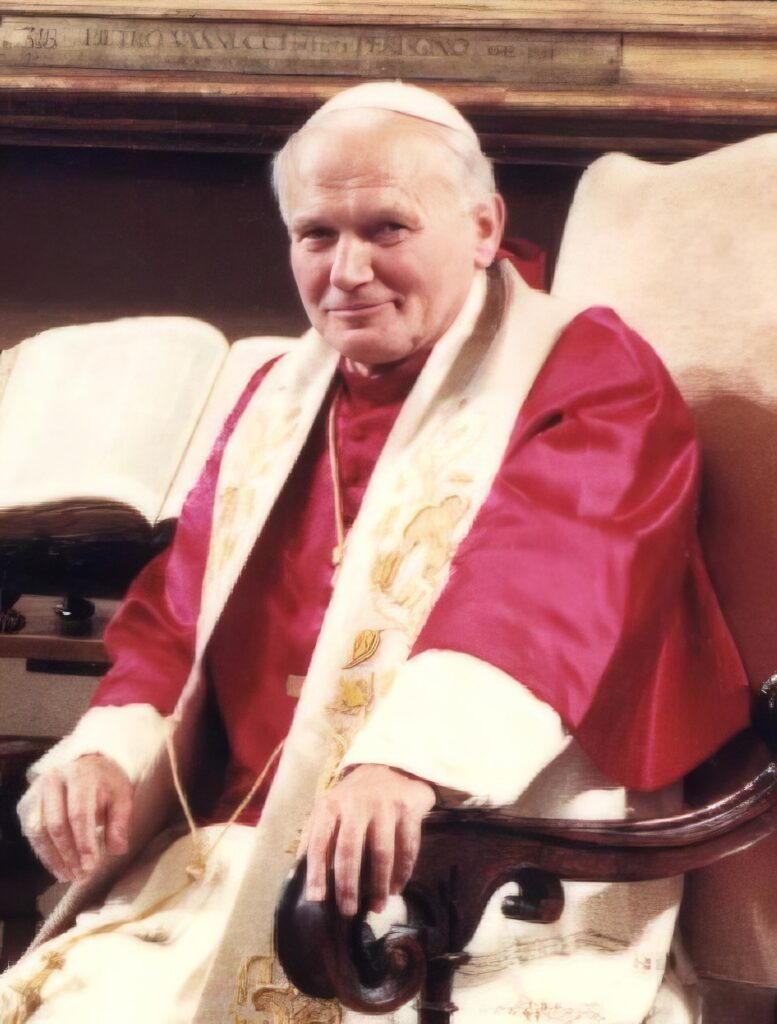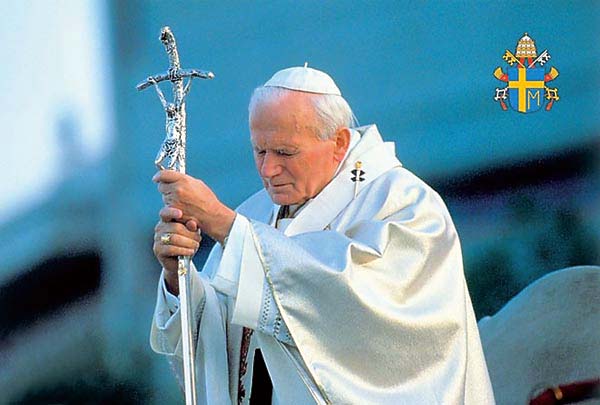Open the doors to Christ
Karol Wojtyła, the 263rd pope, transformed the Church and the world during his 27-year pontificate. Born in Poland in 1920, he lived through Nazi occupation and communist rule before becoming the first Slavic pope in 1978. His inaugural cry, "Do not be afraid!" still resonates today. Traveling the world on 104 trips, meeting millions of faithful, and engaging in dialogue with all religions, he embodied a missionary faith without borders. Beatified in 2011 and canonized in 2014, he remains the pope of courage and universal openness.

On October 22, 1978, a 58-year-old man called out from St. Peter's Square: "Do not be afraid! Open wide the doors to Christ!" These words changed history. Karol Wojtyła became John Paul II, the first Polish and Slavic pope. He transformed the pontificate into a global mission, visiting 129 countries, speaking to young people, dictators, and the poor. His optional memorial on October 22 is a reminder that a bold witness can change humanity.

From the Underground Theatre to the Throne of Peter
Karol Józef Wojtyła was born on May 18, 1920, in Wadowice, near Krakow. His mother died when he was nine, his brother, a doctor, at twelve, and his father at twenty-one. The sole survivor of a decimated family, he entered university in 1938 to study literature and theater. The Nazi invasion closed the school. He worked in a chemical factory to avoid deportation.
In 1942, feeling the call to the priesthood, he joined the clandestine seminary in Krakow. He also founded an underground theater. Ordained a priest on November 1, 1946, he went to Rome to study under the direction of the Dominican Garrigou-Lagrange. His thesis focused on Saint John of the Cross.
Returning to communist Poland in 1948, he worked as a vicar and then as a student chaplain. In 1953, he defended a second philosophical thesis on Max Scheler. He taught ethics in Lublin and Krakow.
Pius XII appointed him auxiliary bishop of Krakow on July 4, 1958. He actively participated in the Second Vatican Council, notably contributing to Gaudium et Spes. Paul VI created him cardinal in 1967, archbishop of a city under communist dictatorship.
On October 16, 1978, the cardinals elected him pope in the second round. He took the name John Paul II. His pontificate lasted 26 years and 5 months, one of the longest in history. He traveled extensively: 104 outside Italy, 146 within Italy, visiting 317 of the 333 Roman parishes.
He received more than 17 million pilgrims in general audiences, met 38 heads of state on official visits, and 738 in audiences. He launched World Youth Day in 1985. He held dialogues with Jews, Muslims, and Buddhists, and invited religions to pray for peace in Assisi.
He promulgated the Catechism of the Catholic Church in 1992, reformed the codes of canon law, and reorganized the Curia. He published 14 encyclicals, 15 apostolic exhortations, and 11 apostolic constitutions. He carried out 147 beatifications (1,338 blesseds) and 51 canonizations (482 saints).
Suffering from Parkinson's disease, he continued his ministry despite visible suffering. He died on April 2, 2005, at 9:37 p.m. More than three million people gathered in Rome to pay their respects. Benedict XVI opened his cause for beatification on April 28, dispensing with the five-year deadline. John Paul II was beatified on May 1, 2011, and canonized on April 27, 2014, along with John XXIII.

The legend of the Polish giant
Testimonies establish that Wojtyła hid Jews during the Nazi occupation, risking his life. They confirm that he worked manually in factories while preparing for the priesthood in hiding. These attested facts establish his moral credibility.
Tradition attributes the fall of communism to his prayers. His pontificate actually coincided with the collapse of the Soviet bloc between 1989 and 1991. His trip to Poland in June 1979 galvanized the Solidarity movement. Lech Wałęsa declared that "without John Paul II, nothing would have been possible." Historians debate the exact extent of his influence, but all acknowledge his catalytic role.
It is said that after the assassination attempt on May 13, 1981, he immediately forgave Ali Ağca. He actually visited him in prison on December 27, 1983. This encounter became iconic. John Paul II attributed his survival to Our Lady of Fátima, whose feast day was precisely May 13. He had the bullet embedded in the crown of the Portuguese statue.
His physical strength was impressive. A skier, hiker, and swimmer until age 60, he embodied vigor in the service of God. This robustness became a symbol: faith gives the energy to transform the world. Even weakened by Parkinson's, he testified that accepting weakness also manifests grace.
The miracles recognized for his canonization concern a French nun cured of Parkinson's in 2005 and a pregnant Costa Rican woman cured of a cerebral aneurysm in 2011. These healings canonically validated his intercession.
His motto "Totus tuus" (All yours, Mary) reflected his total Marian dedication. He always wore the scapular, prayed the rosary daily, and visited Marian shrines in every country. This genuine popular piety brought him close to the ordinary faithful.
The nickname "Giant of God" did not come from a mystical revelation but from collective admiration. His moral stature commanded respect even from his adversaries. He literally embodied Paul's phrase: "When I am weak, then I am strong."

Message of the day
John Paul II calls us to missionary audacity. "Do not be afraid" sums up his entire spirituality. Fear of bearing witness, fear of the powerful, fear of suffering, fear of growing old: Christ conquers all these fears. This pope shows that an ordinary man, orphaned and poor, can turn history upside down if he gives himself totally.
His life teaches three attitudes. First, transform adversity into strength. The factory, the underground, the dictatorship, the attack, Parkinson's: each obstacle became a spiritual springboard. Then, dialogue without compromise. He met with everyone, maintaining his firm convictions. Finally, live with total consistency. His demands for the Church, he applied them first to himself.
The Gospel speaks of the good shepherd who knows his sheep. John Paul II traveled the world to meet each flock. This physical closeness manifested the love of Christ.

Prayer
Saint John Paul II, you who cried out "Do not be afraid," grant us the courage to bear witness. In the face of worldly pressures, mockery, and threats, strengthen our faith. You who forgave your murderer, teach us radical mercy. You who visited the peripheries of the earth, inspire our missionary zeal.
Help us to open wide the doors to Christ. First, our inner doors: pride, fear, selfishness. Then the doors of our families, our professional circles, our society. May your motto "Totus tuus" become ours. Grant that we may entrust ourselves totally to Mary so that we may belong totally to Jesus. Amen.
To live
- Identify a fear that paralyzes your Christian witness and explicitly entrust it to Saint John Paul II during three Hail Marys.
- Do a concrete service to someone who has hurt you, imitating the Pope's radical forgiveness of Ali Ağca.
- Spend ten minutes reading a passage from the Gospel, asking what missionary call God is addressing to you today in your immediate environment.
Memory and places
St. Peter's Basilica in Rome preserves his tomb beneath the altar of the Chapel of St. Sebastian. A constant pilgrimage takes place there. Fragments of his blood are venerated as relics in several shrines.
Wadowice, his Polish hometown, is home to the family home museum. The room where he was born welcomes visitors. The parish church houses the font from his baptism.
Krakow pays special tribute to "its" archbishop. Wawel Cathedral displays his liturgical vestments. The Łagiewniki shrine, dedicated to Divine Mercy, reflects his fundamental devotion. He canonized Sister Faustina in 2000 and instituted Mercy Sunday.
Castel Gandolfo, the papal summer residence, bears witness to his final years. The Shrine of Fátima in Portugal honors Our Lady who protected him during the assassination attempt.
In France, Ars-sur-Formans remembers his visit to the sanctuary of the Curé of Ars. Lourdes welcomed him three times. Lisieux celebrates its proclamation of Thérèse as a Doctor of the Church.
Liturgy
- Readings: Epistle to the Ephesians on the unity of the Church and the missionary call; Gospel of John on the good shepherd who gives his life for his sheep
- Song: Totus tuus adapted into a liturgical hymn, or any Marian canticle celebrating the consecration


